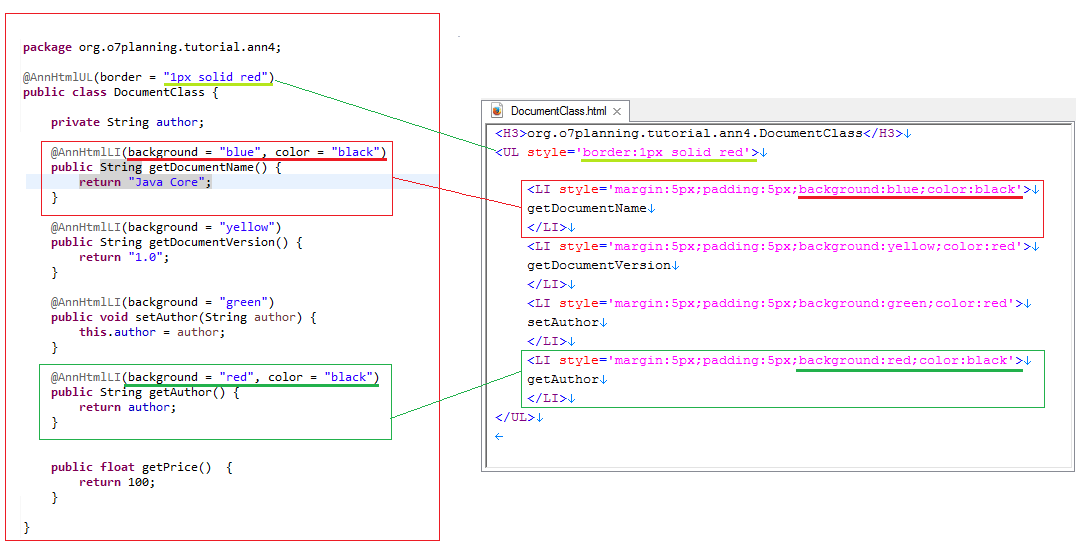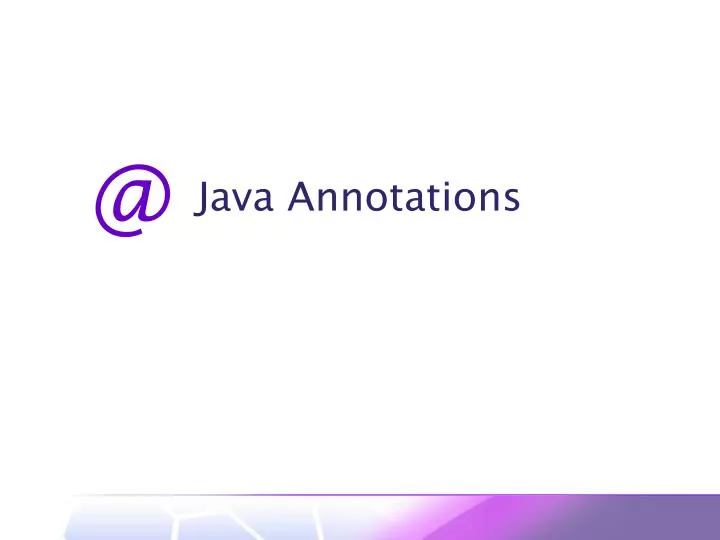

It is not mandatory to use when overriding a method. 1) Instructions to the compiler: There are three built-in annotations available in Java ( Deprecated, Override & SuppressWarnings ) that can be used for. The annotation specifies that the method that has been marked with this annotation overrides the method of the superclass with the same method name, return type, and parameter list. These annotations do not affect the execution of the compiled program.Īnnotations start with Its syntax take an example of annotation. They provide additional information about the program to the compiler but are not part of the program itself. is a composition of and Spring Boots is a shortcut for and can verify this yourself by looking into the definition of these annotations in Spring's source code.Java annotations are metadata (data about data) for our program source code.Spring uses this feature in various situations to define shortcuts for common annotations. With JUnit 4 you have to use instead of Unfortunatelly only works when placed directly at the test class. Be aware that this will not work if you are still using JUnit 4.

Like Spring, JUnit 5 is also able to detect this annotation if it is added to your own custom annotation. We just have to add to get the complete test that our annotation also contains the annotation of JUnit 5. For example, we can create a annotations that defines the Spring setup for mock mvc definition of our tests look a lot cleaner now. These annotations can be grouped together using a custom annotation. Within tests often various Spring annotations are used to define the test setup.
#Java annotations examples code#
Properties are often injected using Spring's such a situation we can move the property expression out of our code into a separate our code we can now use instead of repeating the property expression example are integration tests. Maybe we need a property value in various locations of our code. Here are two other examples that might come in handy. Example use casesĬustom annotations can be used in various situations to improve the readability of our code. Annotations of other frameworks and libraries might not work if you add them to your own annotation. Note that this is a feature of Spring's way of annotation processing and not a general Java feature. Java annotations were added to Java from Java 5. Being meta data, Java annotations do not directly affect the execution of your code, although some types of annotations can actually be used for that purpose. Now we can use our own annotations to annotate our now detects that is annotated with and and provides the same behaviour as the previous example with both annotations present at the UserService class. Last update: Java annotations are used to provide meta data for your Java code. We also added both Spring annotations to our annotation. The standard Java Annotation is used to indicate that the annotation should be processable at runtime. Creating our own annotation is very easy and looks like annotation is defined with the keyword (instead of class or interface). A common example is the combination of and of repeating both annotations over and over again, we can create our own annotation containing these two Spring annotations. Composing a custom annotationĪssume we have a set of Spring annotations we often use together. In this post we will have a look at a very useful Spring feature which allows us to create our own annotations based on one or more Spring annotations. Today many major frameworks like Spring (including Spring Boot) or Hibernate heavily rely on annotations. Java Annotations were introduced with Java 5 back in 2004 as a way to add meta data into Java source code.


 0 kommentar(er)
0 kommentar(er)
